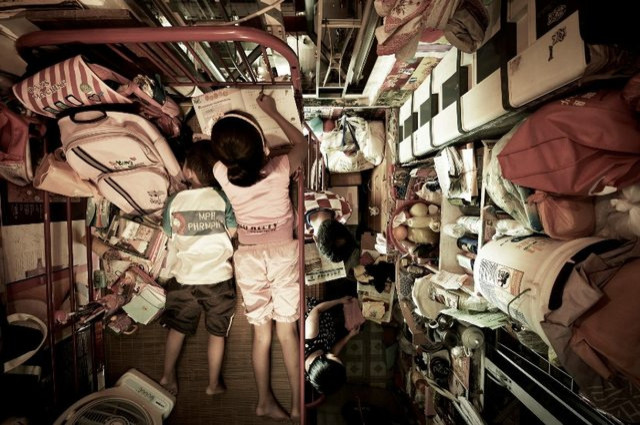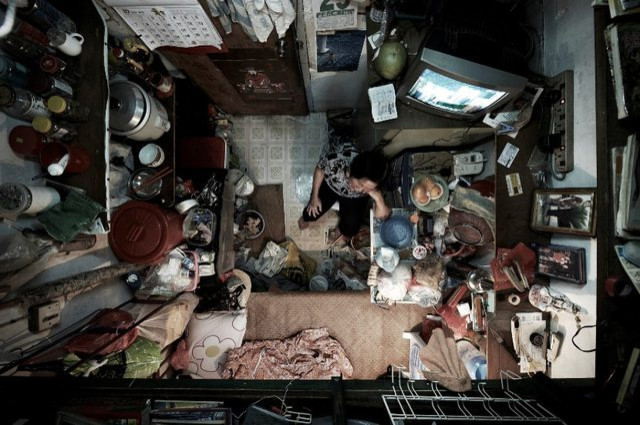Hong Kong's 'Shoebox' Apartments: Slums, But More Expensive Than New York [PHOTOS]

(Source: Benny Lam)
Hong Kong real estate conjures up images of the breathtaking skyline of glass towers dotted with fluorescent billboards. One of Asia's most modern and wealthy cities, the former British colony has flourished economically, now boasting more Louis Vuitton stores than Paris. However, some Hong Kong residents can no longer afford apartments as rents continue to skyrocket. Photographer Benny Lam captured the city's increasingly common 'shoebox' apartments.
According to the South China Morning Post, an estimated 280,000 families are currently living in those shoebox apartments, which are essentially regular-sized (for Hong Kong) flats that have been divided into usually four smaller units.

(Source: Benny Lam)
A group called The Platform Concerning Subdivided Flats and Relevant Issues in Hong Kong was formed in March by academics and social workers concerned with the unsafe living conditions of the cramped 'shoebox' spaces. During an inspection in six different districts in Hong Kong, they found some flats that had been divided up into 10 rooms.
Though the units are reminiscent of prison cells more than homes, people are still paying top dollar. The group calculated that the average price per square foot in these subdivided units was 27 Hong Kong dollars, around 50 cents more than the estimated average per square foot of New York City's notoriously expensive rentals.
Many residents remain in shoebox apartments while they wait to be approved for publicly funded housing, but some have been waiting for years.
"Many residents we interviewed complained of rising rents and many of them have been waiting for public housing for more than three years," said Lai Kin-kwok, from the Caritas Institute of Higher Education.
The group hopes to convince the government to implement rent control and subsidize housing so people subjected to the claustrophobic conditions of shoeboxes have a real chance to move into a proper apartment.
This is not the first time photographers document Hong Kong's housing woes, a long-standing problem for the city's poorest. Photographer Brian Cassey took a look into the lives of the people who lived in "cage homes", cages within apartments that typically measure 6 feet by 2.5 feet.

(Source: Benny Lam)
However, the Hong Kong government's response has been less than ideal for the 200,000 applicants awaiting housing as of September. Even if the goal of building 15,000 new apartments a year is met, it will take a long time to accommodate the growing population that is relying on public housing to move out of the shoeboxes. Additionally, the government has refused to implement rental controls on the private properties where these subdivided units exist.
© Copyright IBTimes 2024. All rights reserved.






















